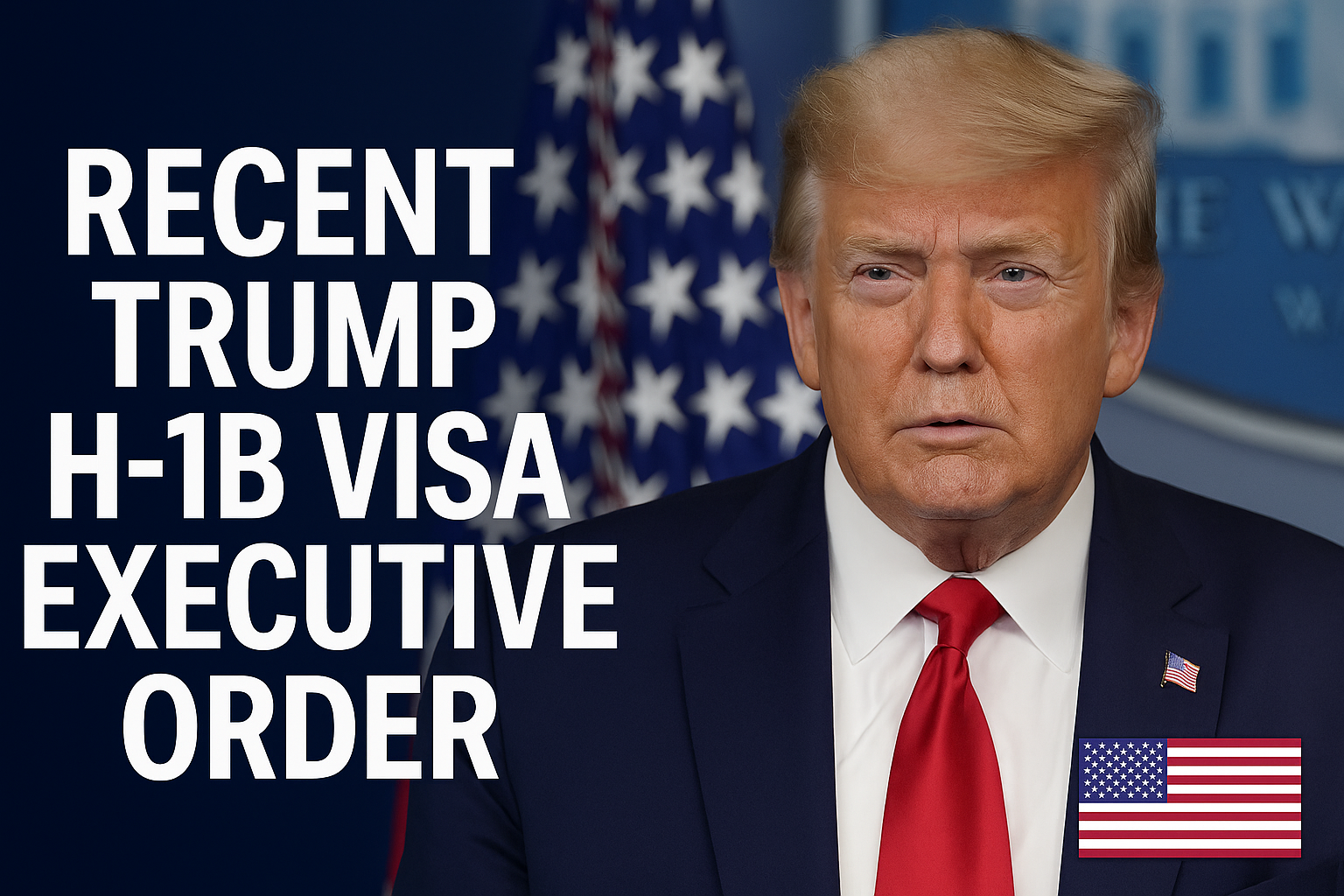A new executive order signed on September 19, 2025 introduces sweeping changes to the H-1B visa program. This policy has sent shockwaves through the tech industry, multinational corporations, and immigrant communities across the U.S. With the introduction of a massive $100,000 annual fee per visa, employers and workers are bracing for one of the most significant immigration shifts in years.
What the New Order Does
- Imposes a $100,000 annual fee on each H-1B visa application or renewal.
- Applies not only to new applications but also to renewals and extensions.
- Restricts re-entry for H-1B workers abroad if the sponsoring company has not paid the fee.
- Takes effect from 12:01 a.m. ET, September 21, 2025.
- Framed by the administration as a measure to protect American workers from being undercut by lower-cost foreign labor.
Who Is Affected
| Group | Impact Under New Order |
|---|---|
| Employers (Tech, Finance, etc.) | Must budget $100,000 per H-1B annually; may reduce number of visa sponsorships. |
| Current H-1B Holders Abroad | May face re-entry issues if company hasn’t paid the fee before travel. |
| High-Skill Foreign Workers | Greater uncertainty, higher barriers to entry and continuation of employment. |
| U.S. Workforce | Potential rise in opportunities and wages as companies reduce reliance on H-1Bs. |
Exemptions & Clarifications
While the order applies broadly, there are expected exemptions:
- Healthcare and Engineering Fields: Early drafts suggest that critical industries may not be required to pay the full $100,000 fee.
- Current Workers Inside the U.S.: Those already holding valid H-1Bs may not be immediately affected, though renewals and international travel could trigger new requirements.
Why the Change Was Introduced
The administration argues that companies have overused the H-1B system, relying heavily on foreign workers to fill roles that could otherwise employ Americans. By significantly increasing the cost of sponsorship, the policy aims to:
- Encourage local hiring by making foreign labor less financially appealing.
- Reinvest in American workforce development through higher wages and new training opportunities.
- Reduce visa misuse by discouraging companies from bulk-filing applications without genuine need.
Consequences & Reactions
- Tech Industry Concerns: Major companies, especially in Silicon Valley, warn that the rule could push innovation overseas if talent is blocked from U.S. access.
- Universities & Research Labs: Institutions that rely on international expertise fear difficulties attracting postdocs and skilled researchers.
- Legal Challenges: Immigration advocates and industry groups are preparing to challenge the executive order, arguing that such a steep fee may be unconstitutional.
- Immediate Panic: Some companies have urged their H-1B employees abroad to return to the U.S. before the order’s effective date to avoid re-entry complications.
Frequently Asked Questions (FAQ)
Does this affect all H-1B workers currently in the U.S.?
Not right away. Workers already inside the U.S. with valid status can stay. However, renewals, extensions, or international travel may be subject to the new $100,000 fee.
Will critical workers like doctors or engineers still be affected?
Possibly not. Draft exemptions suggest healthcare and engineering roles could be spared, but exact details are still pending.
Can smaller companies afford this?
Many startups and smaller firms will struggle to absorb a $100,000 annual fee per employee. This could force them to reconsider sponsorship altogether.
Is this the end of the H-1B visa?
Not exactly — but it’s a dramatic overhaul. The new costs may significantly reduce applications and reshape the demographics of H-1B sponsorship.
Could this executive order be overturned?
Yes. Legal challenges and political debate may determine whether the fee remains, is reduced, or is struck down.
Key Takeaway
The Trump administration’s new H-1B executive order marks one of the most dramatic changes in decades. By adding a $100,000 fee per visa, it will likely discourage companies from relying on foreign labor while sparking debate about U.S. competitiveness and fairness in immigration.
Employers should immediately review their visa strategies, while workers should remain updated on compliance and potential exemptions. For now, the U.S. labor and immigration landscape just changed — and both opportunity and uncertainty lie ahead.




